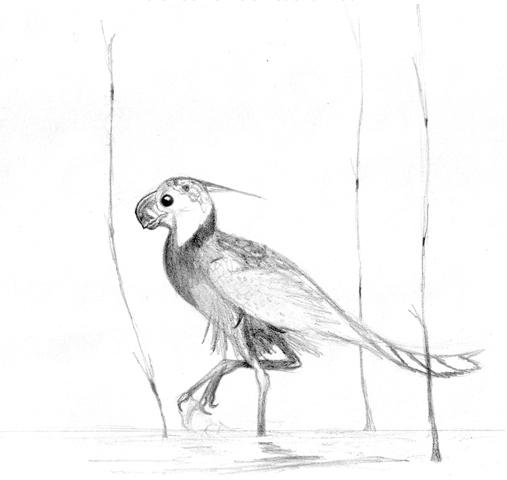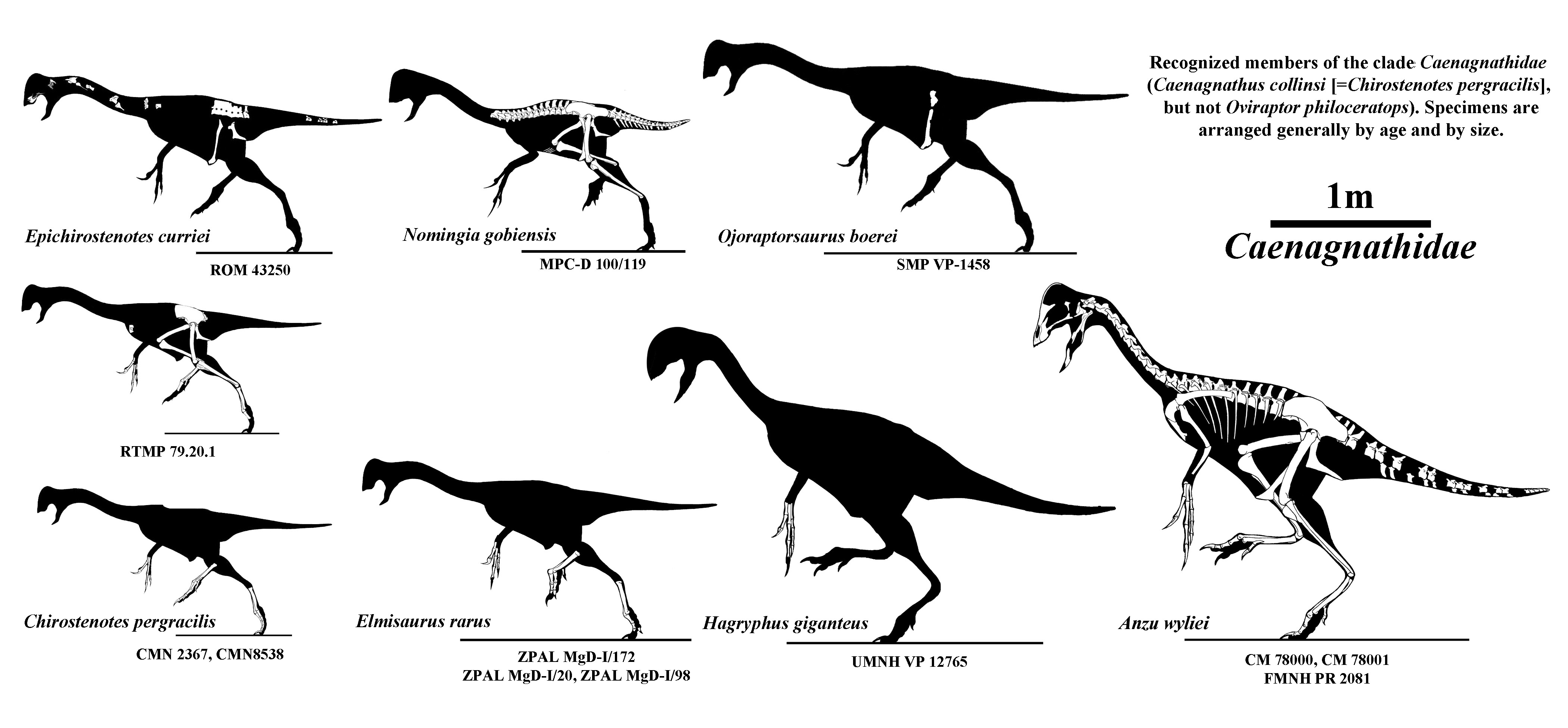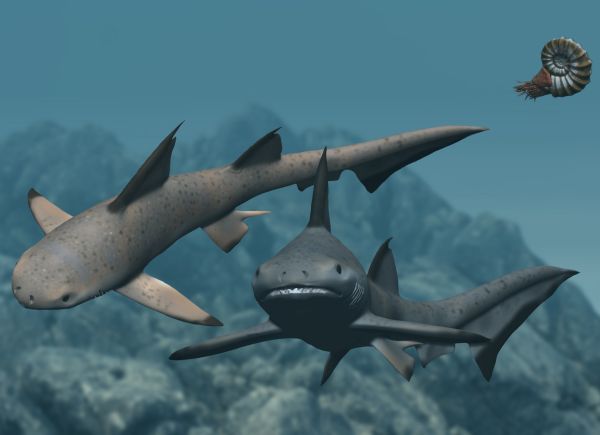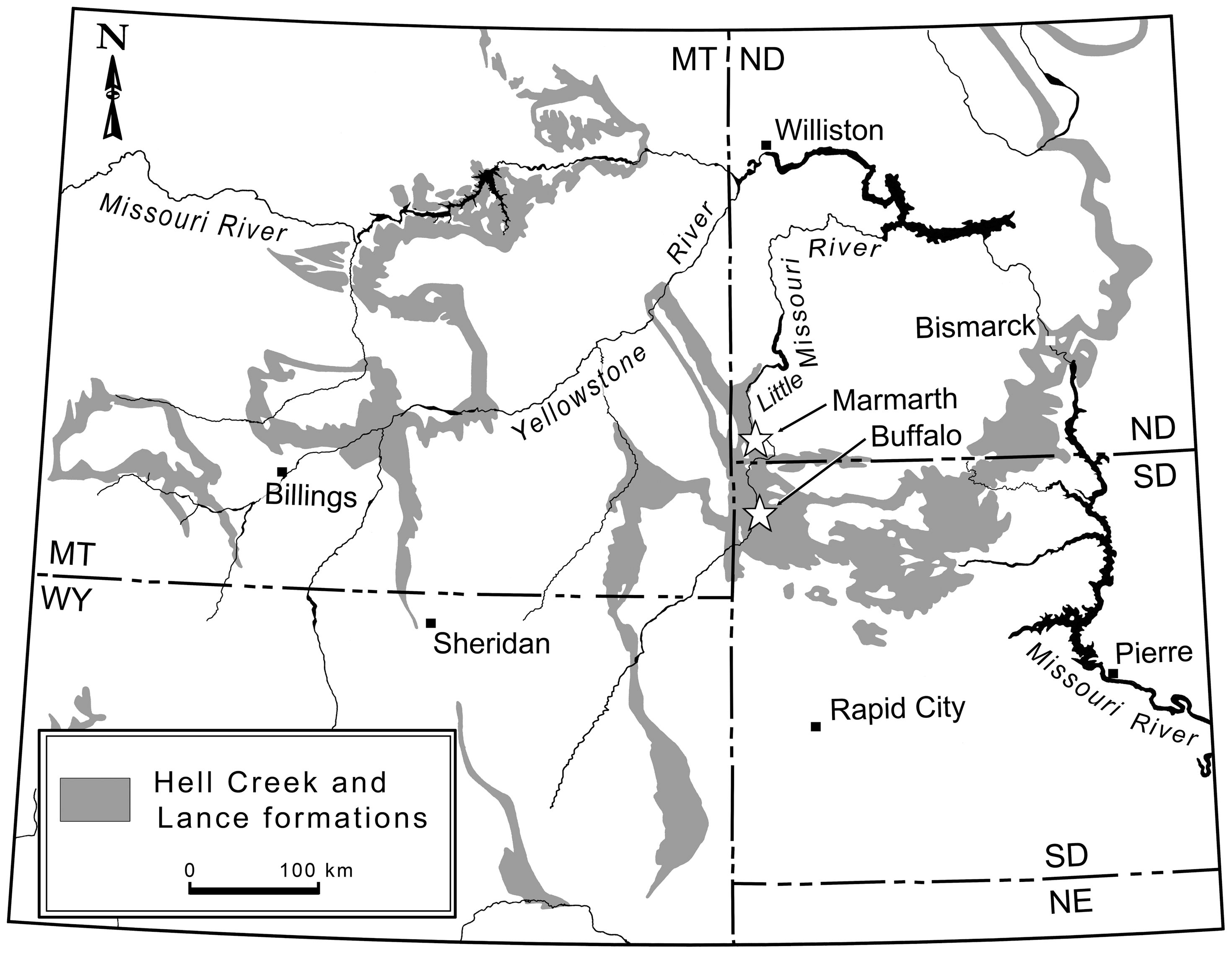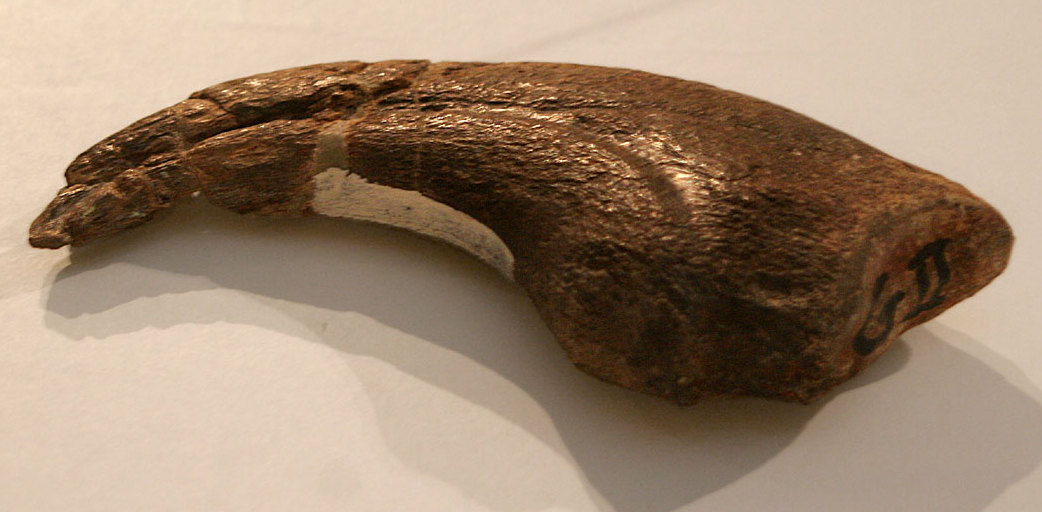|
Caenagnathasia
''Caenagnathasia'' ('recent jaw from Asia') is a small caenagnathid oviraptorosaurian theropod from the Late Cretaceous of Uzbekistan. Discovery The type species ''Caenagnathasia martinsoni'' was named and described in 1994 by Philip J. Currie, Stephen Godfrey and Lev Nesov. The generic name is a combination of a reference to the species' placement in the Caenagnathidae, with Asia, the continent of its provenance. The specific name honours Gerbert Genrikhovich Martinson. The genus is based on holotype N 401/12457, a pair of fused dentaries of the lower jaws. The specimen was found near Dzharakuduk in layers of the Bissekty Formation, dating to the Turonian- Coniacian, around 90 mya, making it the oldest known caenagnathoid. A second specimen was referred to the species, N 402/12457, a right dentary of a slightly smaller individual. Both individuals were adult. In 2015, new material of ''Caenagnathasia'' was described. From the same site as the holotype, the mate ... [...More Info...] [...Related Items...] OR: [Wikipedia] [Google] [Baidu] |
Caenagnathasia
''Caenagnathasia'' ('recent jaw from Asia') is a small caenagnathid oviraptorosaurian theropod from the Late Cretaceous of Uzbekistan. Discovery The type species ''Caenagnathasia martinsoni'' was named and described in 1994 by Philip J. Currie, Stephen Godfrey and Lev Nesov. The generic name is a combination of a reference to the species' placement in the Caenagnathidae, with Asia, the continent of its provenance. The specific name honours Gerbert Genrikhovich Martinson. The genus is based on holotype N 401/12457, a pair of fused dentaries of the lower jaws. The specimen was found near Dzharakuduk in layers of the Bissekty Formation, dating to the Turonian- Coniacian, around 90 mya, making it the oldest known caenagnathoid. A second specimen was referred to the species, N 402/12457, a right dentary of a slightly smaller individual. Both individuals were adult. In 2015, new material of ''Caenagnathasia'' was described. From the same site as the holotype, the mate ... [...More Info...] [...Related Items...] OR: [Wikipedia] [Google] [Baidu] |
Caenagnathidae
Caenagnathidae is a family of bird-like maniraptoran theropod dinosaurs from the Cretaceous of North America and Asia. They are a member of the Oviraptorosauria, and close relatives of the Oviraptoridae. Like other oviraptorosaurs, caenagnathids had specialized beaks, long necks, and short tails, and would have been covered in feathers. The relationships of caenagnathids were long a puzzle. The family was originally named by Raymond Martin Sternberg in 1940 as a family of flightless birds. The discovery of skeletons of the related oviraptorids revealed that they were in fact non-avian theropods, and the discovery of more complete caenagnathid remains revealed that ''Chirostenotes pergracilis'', originally named on the basis of a pair of hands, and ''Citipes elegans'', originally thought to be an ornithomimid, named from a foot, were caenagnathids as well. Anatomy Overall, the anatomy of the caenagnathids is similar to that of the closely related Oviraptoridae, but there are a n ... [...More Info...] [...Related Items...] OR: [Wikipedia] [Google] [Baidu] |
Caenagnathidae
Caenagnathidae is a family of bird-like maniraptoran theropod dinosaurs from the Cretaceous of North America and Asia. They are a member of the Oviraptorosauria, and close relatives of the Oviraptoridae. Like other oviraptorosaurs, caenagnathids had specialized beaks, long necks, and short tails, and would have been covered in feathers. The relationships of caenagnathids were long a puzzle. The family was originally named by Raymond Martin Sternberg in 1940 as a family of flightless birds. The discovery of skeletons of the related oviraptorids revealed that they were in fact non-avian theropods, and the discovery of more complete caenagnathid remains revealed that ''Chirostenotes pergracilis'', originally named on the basis of a pair of hands, and ''Citipes elegans'', originally thought to be an ornithomimid, named from a foot, were caenagnathids as well. Anatomy Overall, the anatomy of the caenagnathids is similar to that of the closely related Oviraptoridae, but there are a n ... [...More Info...] [...Related Items...] OR: [Wikipedia] [Google] [Baidu] |
Bissekty Formation
The Bissekty Formation (sometimes referred to as Bissekt) is a geologic formation and Lagerstätte which crops out in the Kyzyl Kum desert of Uzbekistan, and dates to the Late Cretaceous Period. Laid down in the mid to late Turonian, it is dated to about 92 to 90 Ma (million years ago). Description The lithology of the sediment largely consists of cross bedded sandstones with interbeds of massive sandstone, well cemented intraformational conglomerate, siltstones and mudstones. Most of the fossils are found as clasts within the conglomerates. Fossil content The Bissekty Formation is characterised by a mix of marine, brackish, freshwater, and terrestrial animal fossils. This stands in contrast the strictly marine fossils found in the underlying Dzheirantui Formation, and indicates that the Bissekty was formed during the regression of a saltwater sea. The coastline expanded inland again in the upper portion of the Bissekty, represented by a proportional increase of fully aquat ... [...More Info...] [...Related Items...] OR: [Wikipedia] [Google] [Baidu] |
Caenagnathus Collinsi
''Caenagnathus'' ('recent jaw') is a genus of caenagnathid oviraptorosaurian dinosaur from the late Cretaceous period (Campanian stage; ~75 million years ago). It is known from partial remains including lower jaws, a tail vertebra, hand bones, and hind limbs, all found in the Dinosaur Park Formation of Alberta, Canada. ''Caenagnathus'' measured about long and weighed about . Description ''Caenagnathus'' was a large oviraptorosaurian, with some specimens suggesting it achieved sizes comparable to its relative ''Anzu''. Like ''Anzu'', it had a toothless lower beak that was shallower in depth than those of elmisaurines. It also shared with ''Anzu'' less gracile proportions than those of elmisaurines. Like all oviraptorosaurs, it would most likely have possessed a coat of feathers. Classification This dinosaur has a confusing history. In 1936, a set of jaws (CMN 8776) were found, and later given the name ''Caenagnathus'', meaning 'recent jaw'; they were first thought to be tho ... [...More Info...] [...Related Items...] OR: [Wikipedia] [Google] [Baidu] |
Oviraptorosauria
Oviraptorosaurs ("egg thief lizards") are a group of feathered maniraptoran dinosaurs from the Cretaceous Period of what are now Asia and North America. They are distinct for their characteristically short, beaked, parrot-like skulls, with or without bony crests atop the head. They ranged in size from ''Caudipteryx'', which was the size of a turkey, to the 8-meter-long, 1.4-ton ''Gigantoraptor''. The group (along with all maniraptoran dinosaurs) is close to the ancestry of birds. Some researchers such as Maryanska ''et al'' (2002) and Osmólska ''et al.'' (2004) have proposed that they may represent primitive flightless birds.Osmólska, Halszka, Currie, Philip J., Brasbold, Rinchen (2004) "The Dinosauria" Weishampel, Dodson, Osmólska. "Chapter 8 Oviraptorosauria" University of California Press. The most complete oviraptorosaur specimens have been found in Asia. The North American oviraptorosaur record is sparse.Varricchio, D. J. 2001. Late Cretaceous oviraptorosaur (Theropoda) ... [...More Info...] [...Related Items...] OR: [Wikipedia] [Google] [Baidu] |
Anzu (dinosaur)
''Anzu'' (named for Anzû, a bird-like daemon in Ancient Mesopotamian religion) is a monospecific genus of caenagnathid dinosaur from North Dakota, South Dakota and Montana that lived during the Late Cretaceous (upper Maastrichtian stage, 67.2-66.0 Ma) in what is now the Hell Creek Formation. The type species and only species, ''Anzu wyliei'' is known from numerous skeletons that preserve cranial and postcranial elements. It was named in 2014 by Matthew C. Lamanna, Hans-Dieter Sues, Emma R. Schachner, and Tyler R. Lyson. It was named one of the "Top 10 New Species" for new species discovered in 2014 by the International Institute for Species Exploration in 2015. History of discovery Several large skeletons from the late Maastrichtian Hell Creek Formation of Montana and South Dakota were initially referred to as "cf. ''Chirostenotes''",Varricchio, D. J. (2001). Late Cretaceous Oviraptorosaur (Theropoda) dinosaurs from Montana. ''Mesozoic Vertebrate Life.'' D. H. Tanke and K. ... [...More Info...] [...Related Items...] OR: [Wikipedia] [Google] [Baidu] |
Gigantoraptor Erlianensis
''Gigantoraptor'' () is a genus of large oviraptorosaur dinosaur that lived in Asia during the Late Cretaceous period. It is known from the Iren Dabasu Formation of Inner Mongolia, where the first remains were found in 2005. ''Gigantoraptor'' was the largest oviraptorosaur, reaching in length and in body mass. It had an extensively pneumatized vertebral column and elongated arms and legs. Both femur and tibia measured over in length, an unusual trait among giant theropods. The lower jaws were toothless and ended in a keratinous beak, as seen in other oviraptorosaurs. Though several oviraptorosaur species are known to have developed a full coat of feathers, ''Gigantoraptor'', due to its size, could have lost some of this integument. The genus is classified as an oviraptorosaurian dinosaur, a group of generally small feathered animals. Though it was originally found to represent a basal oviraptorid, subsequent analyses have shown it to be a caenagnathid. It was a giant, ground ... [...More Info...] [...Related Items...] OR: [Wikipedia] [Google] [Baidu] |
Oviraptorosauria
Oviraptorosaurs ("egg thief lizards") are a group of feathered maniraptoran dinosaurs from the Cretaceous Period of what are now Asia and North America. They are distinct for their characteristically short, beaked, parrot-like skulls, with or without bony crests atop the head. They ranged in size from ''Caudipteryx'', which was the size of a turkey, to the 8-meter-long, 1.4-ton ''Gigantoraptor''. The group (along with all maniraptoran dinosaurs) is close to the ancestry of birds. Some researchers such as Maryanska ''et al'' (2002) and Osmólska ''et al.'' (2004) have proposed that they may represent primitive flightless birds.Osmólska, Halszka, Currie, Philip J., Brasbold, Rinchen (2004) "The Dinosauria" Weishampel, Dodson, Osmólska. "Chapter 8 Oviraptorosauria" University of California Press. The most complete oviraptorosaur specimens have been found in Asia. The North American oviraptorosaur record is sparse.Varricchio, D. J. 2001. Late Cretaceous oviraptorosaur (Theropoda) ... [...More Info...] [...Related Items...] OR: [Wikipedia] [Google] [Baidu] |
Anzu Wyliei
''Anzu'' (named for Anzû, a bird-like daemon in Ancient Mesopotamian religion) is a monospecific genus of caenagnathid dinosaur from North Dakota, South Dakota and Montana that lived during the Late Cretaceous (upper Maastrichtian stage, 67.2-66.0 Ma) in what is now the Hell Creek Formation. The type species and only species, ''Anzu wyliei'' is known from numerous skeletons that preserve cranial and postcranial elements. It was named in 2014 by Matthew C. Lamanna, Hans-Dieter Sues, Emma R. Schachner, and Tyler R. Lyson. It was named one of the "Top 10 New Species" for new species discovered in 2014 by the International Institute for Species Exploration in 2015. History of discovery Several large skeletons from the late Maastrichtian Hell Creek Formation of Montana and South Dakota were initially referred to as "cf. ''Chirostenotes''",Varricchio, D. J. (2001). Late Cretaceous Oviraptorosaur (Theropoda) dinosaurs from Montana. ''Mesozoic Vertebrate Life.'' D. H. Tanke and K. ... [...More Info...] [...Related Items...] OR: [Wikipedia] [Google] [Baidu] |
Microvenator Celer
''Microvenator'' (meaning "small hunter") is a genus of dinosaur from the Early Cretaceous Cloverly Formation in what is now south central Montana. ''Microvenator'' was an oviraptorosaurian theropod. The holotype fossil is an incomplete skeleton, most likely a juvenile (organism), juvenile with a length of , and consequently, the adult size remains uncertain. ''Microvenator celer'' is primitive and may be the "sister taxon to all other oviraptorosaurs."Varricchio, D. J. 2001. Late Cretaceous oviraptorosaur (Theropoda) dinosaurs from Montana. pp. 42–57 in D. H. Tanke and K. Carpenter (eds.), Mesozoic Vertebrate Life. Indiana University Press, Indianapolis, Indiana. Discovery Barnum Brown collected the type specimen (AMNH 3041) in 1933 by a field party working for the American Museum of Natural History and he erroneously included ''Deinonychus'' teeth with the specimen. Because of this, Brown informally dubbed it "Megadontosaurus" ("big-toothed lizard"), Brown made illustr ... [...More Info...] [...Related Items...] OR: [Wikipedia] [Google] [Baidu] |
Leptorhynchos (dinosaur)
''Leptorhynchos'' (meaning "slender beak") is an extinct genus of caenagnathid dinosaurs known from the Late Cretaceous (Campanian-Maastrichtian aged) Aguja Formation of west Texas United States. It lived about 80.5–72 million years ago. It is distinguished from its relatives ''Chirostenotes'' and ''Anzu'' by its smaller size, and by a more strongly upturned mandible, similar to that of oviraptorids. The specializations of the beak in ''Leptorhynchos'' and other caenagnathids suggest that they were herbivores. The species ''L. elegans'' has since been transferred to the genus ''Citipes'', leaving only the type species ''L. gaddisi'' in the genus. ''Leptorhynchos'' has been placed in the Elmisaurinae. See also * Timeline of oviraptorosaur research This timeline of oviraptorosaur research is a chronological listing of events in the history of paleontology focused on the oviraptorosaurs, a group of beaked, bird-like theropod dinosaurs. The early history of oviraptorosau ... [...More Info...] [...Related Items...] OR: [Wikipedia] [Google] [Baidu] |
